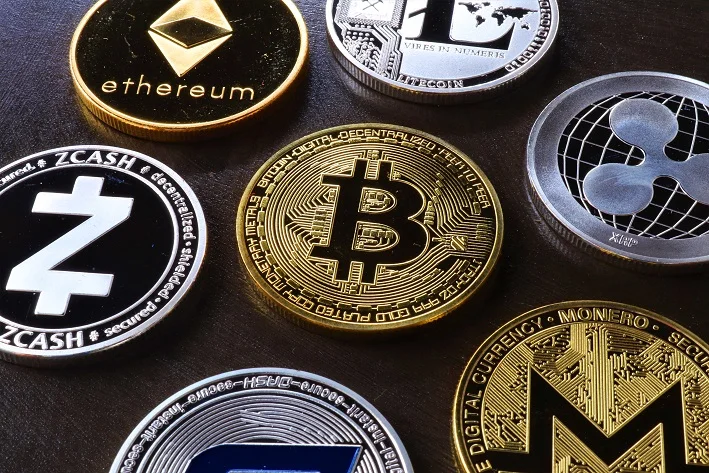In November 2017, a high-level Inter-Ministerial Committee was investigating the problems with Virtual currency in India. The Committee turned in its summary on February 28, 2019, and on July 22, 2019, it was made available to the public. The Committee’s mandate included examining the legal and policy framework for regulating Virtual currencies in India.
Virtual currencies in India are tradable forms of value that exist only online and can be useful as a medium of exchange or an accounting unit. Only a few people know that Virtual currencies in India are not legal tender. The central government guarantees a form of legal tender, and all parties must accept it as payment.
Crypto Currency
A particular kind of Virtual currency in India known as cryptocurrency is decentralized and secured by cryptographic encryption methods. Decentralization implies that no single entity is in charge of all transactions. Instead, through independent computers, transaction data is logged and distributed among distributor networks.
Issues with Virtual currency in India
The Report notes several problems with Virtual currency in India prevent them from replacing traditional currencies. These include:
- The market’s fluctuations affect Virtual currency in India: For instance, in less than a year, the value of the Bitcoin cryptocurrency dropped from about USD 20,000 (December 2017) to USD 3,800 (Nov 2018);
- Indian virtual currencies are decentralized: This factor makes it difficult to monitor and control the Virtual currencies in India.
- Virtual currency in India has server flaws: The cryptocurrency design has several flaws that expose users to the risk of phishing cyber attacks on Virtual currencies in India.
- We can’t rectify errors in these Indian virtual currencies: Additionally, because transactions are irreversible, errors cannot be undone.
- Virtual currencies in India are High-power-consuming: cryptocurrencies require a lot of processing and storage power, which can negatively impact a nation’s energy supplies.
- Virtual currencies in India can be used for illegal work: Cryptocurrencies offer greater anonymity, making them more susceptible to money laundering and terrorist financing schemes.
Review of Virtual Currency Regulation
The Committee noticed that different countries follow different regulatory frameworks for cryptocurrencies. Several nations, including Switzerland, Japan, and Thailand, permit the use of cryptos as payment.
We can utilize them in barter exchanges in Russia but not for actual payments. China, on the other hand, has outright banned Virtual currencies. The Committee noted that no nation had permitted Indian virtual currency as legal tender. The Committee suggested that all private cryptos, excluding any issued by the government, be outlawed in India and that any activity related to cryptocurrencies be made illegal by law.
Additionally, it suggested that the government create a permanent committee to review the issues surrounding Virtual currencies in India as needed and consider local and international technological advancements.
Also Read: List of Indian Cryptocurrency
Must have Virtual Currency Regulation Review
The Report notes that compared to the current payment options and Indian virtual currency regulation review could offer several benefits. These include the availability of all transactional records, less expensive alternatives for international payments, and distribution methods of Virtual currencies in India that are simple and secure.
The Committee also identified several risks and problems related to its implementation. To issue a digital currency, sizable infrastructure spending would be necessary. In a distributed network, validating transactions would use computation power and electricity. Additionally, issues with internet connectivity and electricity outages may cause infrastructure problems.
Services of Distributed Ledger Technologies (DLT)
The Committee noted that although virtual currency in India doesn’t have any advantages as a medium of exchange, the technology involved has several potential uses. DLT is useful for detecting fraud, processing KYC requirements, and managing insurance claims because it makes it simpler to spot duplicate transactions.
If used for sustaining land records, it can also be beneficial for eradicating mistakes and fraud in the land markets of Virtual currencies in India.
Conclusion
A virtual currency in India is an electronic-only digital representation of value. It is easy to handle using a specialized computer, mobile, or software application. Indian virtual currency exchanges take place over the Internet or through secure, dedicated networks. Virtual currencies in India are generally unregulated and private individuals or groups of developers distribute them. So, use the Indian virtual currency safely.
Virtual Currency in India – FAQs
What benefits does Indian virtual currency offer?
Ans. There is no need to manufacture or store the Indian virtual currency physically. They also reduce the need for intermediaries and remove geographical restrictions, which speed up transactions. Discharging escrow funds is one transaction that is programable into virtual currencies. You can get all the information in the virtual currency regulation review.
What drawbacks are there to using Indian virtual currency?
Ans. Because Indian virtual currency is digital, hackers can attract them as attractive targets. Virtual currency storage and maintenance costs include things like digital wallets and custody. The ICO boom-and-bust cycle demonstrated how scams could also exist in the virtual currency ecosystem.




